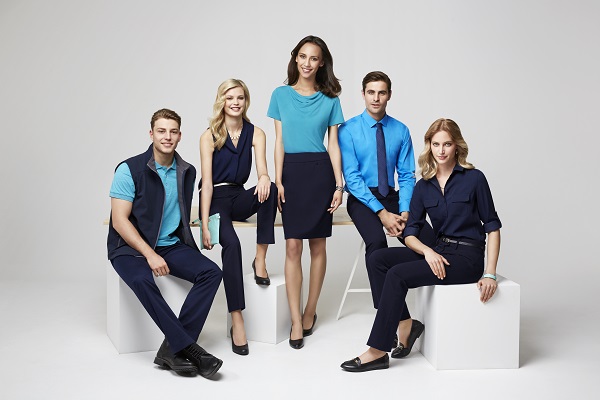Corporate Uniform Basics
For many businesses, a corporate uniform is an essential part of their marketing strategy. As the first visual impression a client or customer receives, a uniform says a lot about your organisation.
When you get it right, a corporate uniform can give your business credibility. The appearance of your staff can create a better impression for your business – that of proficiency and professionalism.
In fact, results from a study conducted by research firm Harris Interactive indicate that uniforms have the ability to change the way a customer feels about a business. 65% of respondents agreed that seeing an employee in a uniform made them think more highly of the organisation.
However, make the wrong uniform choices and you risk your company being perceived as unprofessional and out of touch, as well as alienating valued staff. Whether introducing a new uniform or upgrading an existing one, there are some things you should consider.
Who’s Wearing the Uniform and What are they Doing?
Uniforms need to differ depending on the individual and the nature of their role. For instance, if their work involves safety risks, it will need to incorporate necessary safety precautions such as boots, hi-vis, or hard hats. If their work requires a lot of physical activity, it will need to be comfortable and made of breathable fabric. A more corporate-focused role, a uniform will need to be neat, stylish and professional.
Also ensure your choice of uniform meets industry standards. Australian and New Zealand standards clearly indicate materials to be used for workwear in specific industries and applications. So, it’s important to check that your uniform choices meet the standards relevant to their intended use.
Corporate Uniforms and Comfort
Comfort must be high on the priority list when choosing a uniform. Not only must a uniform be suited to the work being carried out, but it must also be made of a comfortable fabric and importantly, it must fit well. Ensure your uniform is flexible enough to suit all body shapes and sizes, as well as all aspects of your business.
Comfort is more than how the uniform fits and moves with the individual throughout the day. It also refers to how the individual feels in the uniform. If a uniform doesn’t fit properly, an employee is not comfortable with any aspect of the uniform, or if a person struggles to incorporate religious or cultural practices with their uniform, then these factors can affect an individual’s confidence and overall ability to effectively do their job.
Quality and Durability for Corporate Uniforms
As tempting as it is to choose a cheaper option, be certain that your choice will not cost your business more in the long run.
Garments which are intended to be worn every day must be tough enough to survive long term wash and wear. This is just as relevant for corporate uniforms as it is for outdoor physical wear, as reflecting the business, the uniform must scrub up accordingly.
Check that the material is hardy and that the colours and logos will last, even with frequent washing. Faded and discolored fabric is not a good look for your brand, so spend the extra time and money on clothing that will survive the wash-wear cycle.
Corporate Uniform Aesthetics
What do you want your uniform to say about your business? Do you want to be perceived as a luxury brand, corporate focused, or casual professional? The look of your uniform will not only help communicate your brand to customers, but also help staff to embrace the organisation’s brand and values on a daily basis.
Even though there may be several versions of your uniform (think office versus outdoor staff and safety features), it is important that the uniforms remain cohesive. This way there is no doubt which organisation the individual represents, and employees will feel part of a wider team.
Introducing New Corporate Uniforms
If staff uniforms are a new introduction, there may be some initial resistance. By involving staff in the planning phases and truly listening to their concerns and ideas, you can avoid some of the early doubts.
A trial period where issues can be addressed and rectified before a uniform is fully implemented might help to address concerns and allow staff to become familiar and more comfortable with the concept of a uniform.
A uniform will create the sense of being part of a team and wider organisation, as well as reduce any inequalities between those wearing it. The combination of mental and aesthetic cohesion can be a powerful way to include people and create a positive impression on others.

